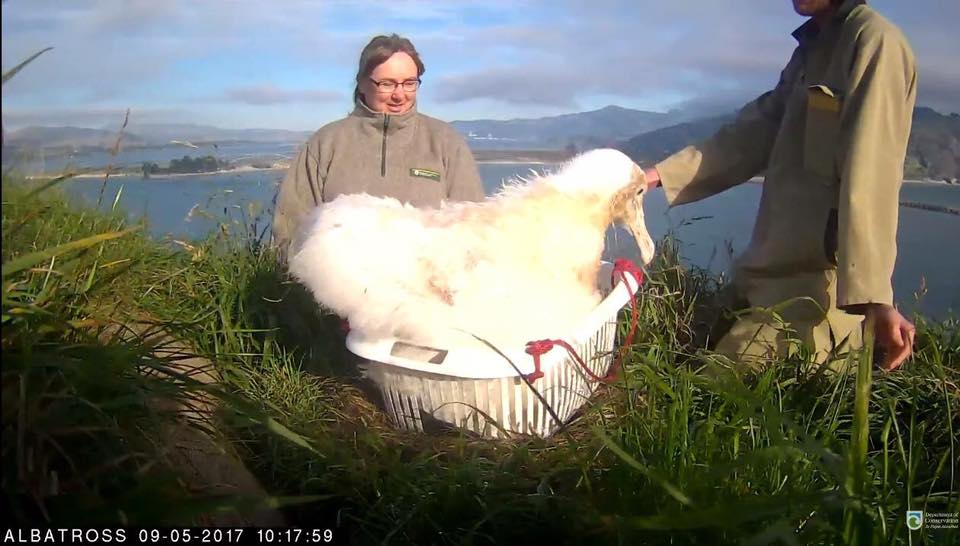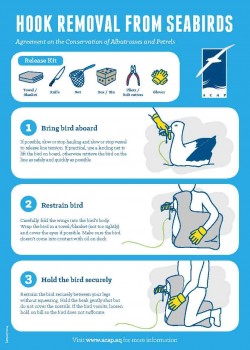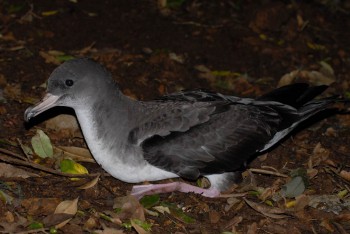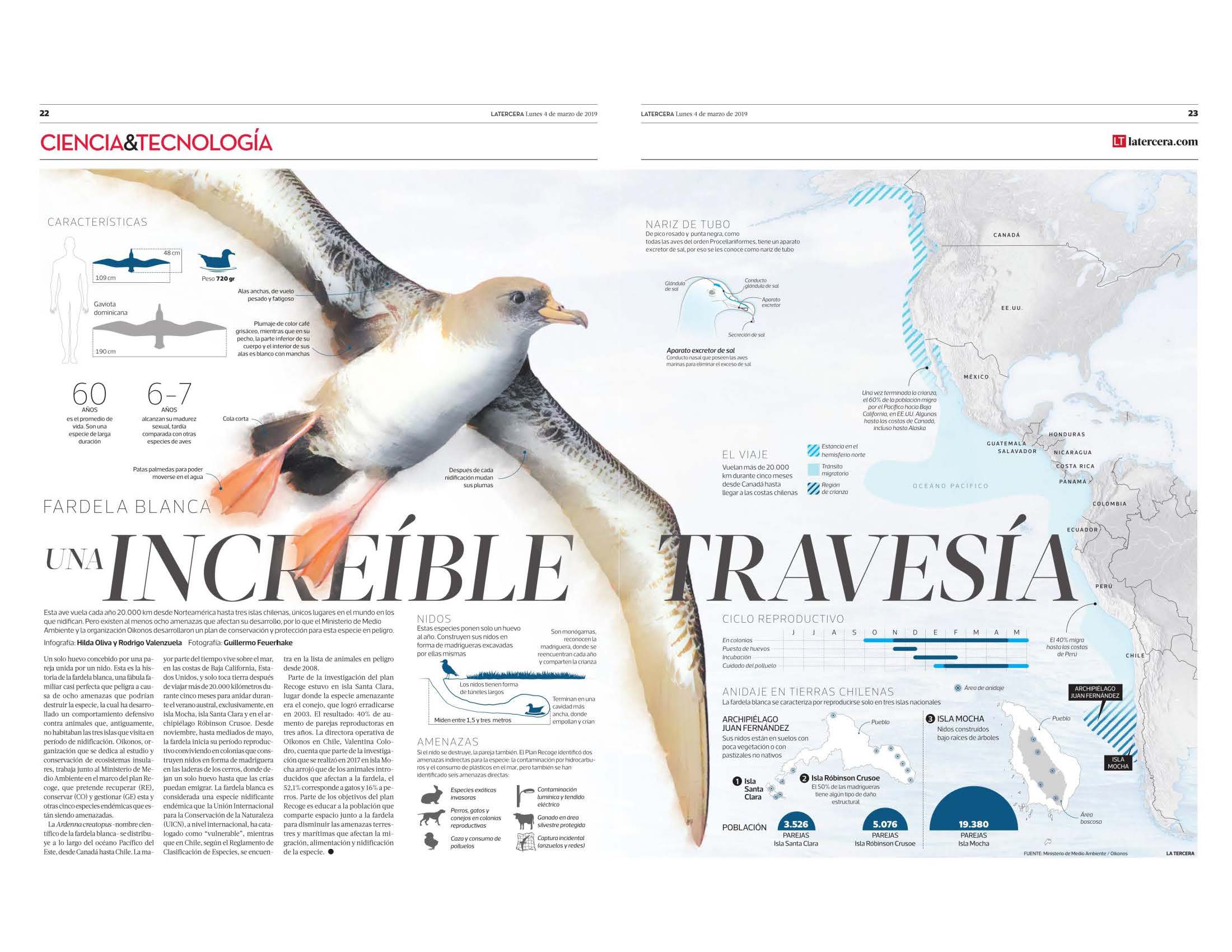The Pacific Seabird Group held its 46th Annual Meeting on the Hawaiian island of Kauai from 27 February to 3 March 2019. A list by senior author and title follows of presentations made at the meeting that considered ACAP-listed species and also seabird bycatch. Abstracts for each of these (and other) titles are given in the on-line abstract booklet.
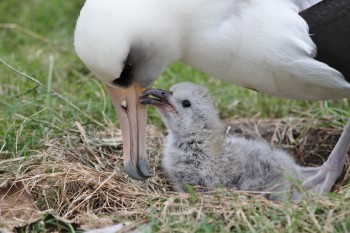
A Laysan Albatross feeds its chick on Midway Atoll, photograph by Pete Leary
Colleen Bryan. Potential to trace chemicals in Laysan Albatross (Phoebastria immutabilis) sibling eggs.
Marcus Collado. Predator control on a navy installation: keeping the enemy at bay [Laysan Albatross Phoebastria immutabilis].
Melinda Conners. Using life history to inform marine spatial planning for the protection of wide-ranging pelagic seabirds [Laysan Phoebastria immutabilis and Black-footed P. nigripes Albatrosses].
Tomohiro Deguchi. Determinants of post-fledging survival in translocated albatross chicks [Short-tailed Albatross Phoebastria albatrus].
Caroline Fox. A spatial assessment of albatrosses, fisheries, and bycatch events in coastal British Columbia [Black-footed Albatross Phoebastria nigripes, Laysan Albatross P. immutabilis, Short-tailed Albatross P. albatrus].
Autumn-Lynn Harrison. Bycatch of banded seabirds in the Pacific Ocean, 1945-2018 [Black-footed Albatross Phoebastria nigripes, Laysan Albatross Phoebastria immutabilis].
Peter Hodum. Living with seabirds in a complex landscape: Juan Fernández Islands, Chile [Pink-footed Shearwater Ardenna creatopus].
Jason Jannot. Cryptic seabird mortality on U.S. West Coast Pacific hake fishing vessels [Black-footed Albatross Phoebastria nigripes].
Joseph Krieger. Seabird bycatch and mitigation efforts in Alaska fisheries summary report: 2007 through 2017.
Caitlin Kroeger. At-sea energetics of Campbell and Grey-headed Albatrosses in relation to southern ocean wind variability.
Verónica López. Challenges and lessons learned in addressing human harvest of Pink-footed Shearwaters on Isla Mocha, Chile.
Edward Melvin. Lessons from seabird conservation in Alaska longline fisheries.
Kaycee Morra. Decadal and millennial-scale foraging habits of three Hawaiian seabirds: amino acid δ15N, δ13C, and δD analyses [Laysan Albatross Phoebastria immutabilis].
Jaime Ojeda. Ancestral and contemporary biocultural interactions between albatrosses and human being in the sub-Antarctic region.
Jonathan Plissner. Update on albatross population monitoring at Midway Atoll NWR.
Katherine Rubiano. Protecting birds and pilots: Laysan Albatross management on a navy installation.
Matthew Saunter. Adapting management priorities to buffer effects of climate change at Kure Atoll, Hawai‘i [Black-footed Albatross Phoebastria nigripes].
Rodrigo Silva. Solutions to protect storm-petrels between mining development, military exercises and an artificially illuminated landscape. [Pink-footed Shearwater Ardenna creatopus].
Cristián Suazo. Seabird bycatch in purse seine fisheries: the case of the modified purse seine as a novel mitigation measure.
Roberta Swift. The albatross demography program: an update. [Black-footed Albatross Phoebastria nigripes, Laysan Albatross Phoebastria immutabilis].
Leigh Torres. Novel methods describe fine-scale albatross-fisheries interactions in the north Pacific. [Black-footed Albatross Phoebastria nigripes, Laysan Albatross P. immutabilis, Short-tailed Albatross P. albatrus].
Eric A. VanderWerf. Translocation of Hawaiian seabirds to high islands to mitigate the effects of climate change. [Black-footed Albatross Phoebastria nigripes, Laysan Albatross P. immutabilis]
William Walker. Preliminary findings on the diet of Laysan Albatrosses, Phoebastria immutabilis, in the eastern Bering Sea and Aleutian Islands region.
A large number of presentations was made on procellariiform species not listed by ACAP. Consult the abstract booklet for these.
Reference:
[Karnovsky, N. & Bachman, D. (Eds)] 2019. Pacific Seabird Group 46th Annual Meeting Kaua’i Beach Resort Lihue, Kaua’i, Hawai’i 27 February – 3 March 2019 Scientific Program Full Abstracts. 96 pp.
John Cooper, ACAP Information Officer, 03 April 2019
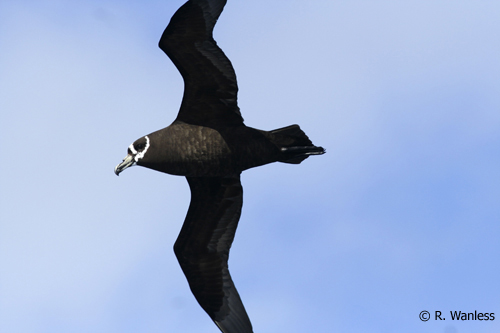

 English
English  Français
Français  Español
Español 